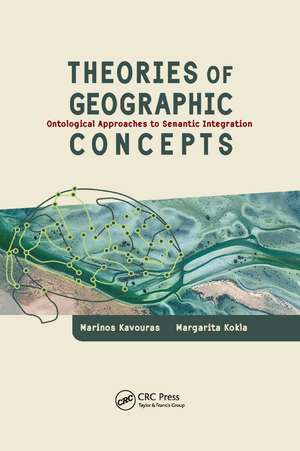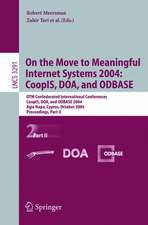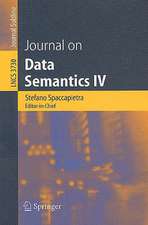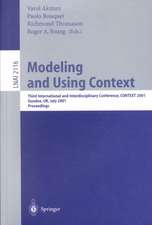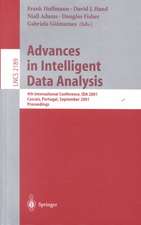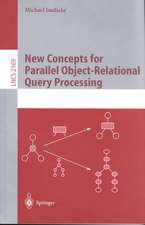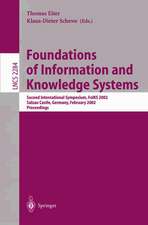Theories of Geographic Concepts: Ontological Approaches to Semantic Integration
Autor Marinos Kavouras, Margarita Koklaen Limba Engleză Paperback – 11 sep 2019
Copiously illustrated, the book contains more than 80 illustrations and several examples to various approaches that provide a better understanding of the complexity of ontology integration tasks. The authors provide guidance on selecting the most appropriate approach and details on its application to indicative integration problems.
Preț: 495.55 lei
Preț vechi: 619.44 lei
-20% Nou
Puncte Express: 743
Preț estimativ în valută:
94.85€ • 103.07$ • 79.73£
94.85€ • 103.07$ • 79.73£
Carte tipărită la comandă
Livrare economică 21 aprilie-05 mai
Preluare comenzi: 021 569.72.76
Specificații
ISBN-13: 9780367387914
ISBN-10: 0367387913
Pagini: 338
Dimensiuni: 156 x 234 x 20 mm
Greutate: 0.52 kg
Ediția:1
Editura: CRC Press
Colecția CRC Press
ISBN-10: 0367387913
Pagini: 338
Dimensiuni: 156 x 234 x 20 mm
Greutate: 0.52 kg
Ediția:1
Editura: CRC Press
Colecția CRC Press
Public țintă
Academic and Professional Practice & DevelopmentCuprins
The Context. Introduction. Geographic Ontologies. Semantic Interoperability. Theoretical Foundations. Ontologies. Concepts. Semantics. Formal Approaches. Knowledge Representation Instruments. Formal Concept Analysis. Conceptual Graphs. Channel Theory. Description Logics. Natural Language and Semantic Information Extraction. Similarity. OntologY Integration. Integration Framework. Integration Approaches. Integration Guidelines. POST-REVIEW. Epilogue.
Notă biografică
Kavouras, Marinos; Kokla, Margarita
Descriere
Written by experts in the field, this book addresses theoretical, formal, and pragmatic issues of geographic knowledge representation and integration based on an ontological approach. The first part sets the context by emphasizing the importance of philosophical, cognitive, and formal theories in preserving the semantics of geographic concepts during ontology development and integration. Part two exhausts major theoretical issues related to the subject and part three analyzes a number of formal tools. Part four introduces a general framework with the necessary processes and guidelines to ontology integration and applies it to a number of ontology integration cases.
